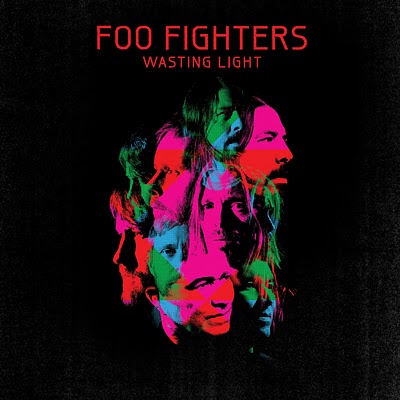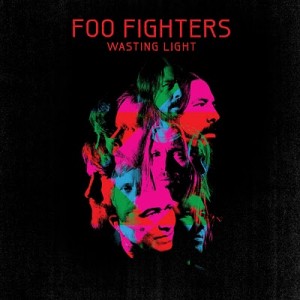
 A lot of people get scared whenever the Foo Fighters release something new. Could this possibly be the album where the legendary Dave Grohl slips up? Will Grohl ever put something out that will spoil his near-perfect resume? If you’re waiting for Grohl to screw up and release something less than preferable, you’ll be waiting forever, or another few years at the least. Wasting Light is even more than just another score for Grohl and the Foos.
A lot of people get scared whenever the Foo Fighters release something new. Could this possibly be the album where the legendary Dave Grohl slips up? Will Grohl ever put something out that will spoil his near-perfect resume? If you’re waiting for Grohl to screw up and release something less than preferable, you’ll be waiting forever, or another few years at the least. Wasting Light is even more than just another score for Grohl and the Foos.
The album rocks like it’s 1995 — literally. Recorded entirely with analog equipment at Grohl’s house, the recording scenario allows the band to forge a sound reminiscent of the grunge era while showcasing the Foo Fighter’s incredible growth and unity as a band. Oh yeah, and Butch Vig produced it. Vig, who produced Nirvana’s Nevermind and The Smashing Pumpkins’ Siamese Dream, is one of the pioneers of the grunge guitar sound that is so prominent on this album, and every rock album between about 1991 and 1996.
A lot of focus has been put on the use of analog equipment for the album. The most important thing to know about analog is that it does not allow the musician to fix their mistakes like they can with modern production technology. This puts all sorts of pressure on the musicians to be perfect and learn to achieve the sound they want by rigorous practice instead of using the safety net of Pro Tools. Ironically, their use of analog, a technique known to produce scrappy and desirably messy sounding albums, has turned the Foo Fighters into rock ‘n roll machines, sounding tighter than ever on this record.
After reaching what seems like the peak of any band’s career, playing to over 80,000 people at Wimbledon, the Foo Fighters made sure the next recording would be relaxed and provide them with a clean slate to create whatever sound they needed to. In contrast to 2007’s Echoes, Silence, Patience & Grace, which was grandiose and broad, perfect for an epic arena rock band to play all over the world, Wasting Light is more straightforward hard rock.
The tone is unified, but there are sounds intermixed that remind the listener of other hard rock legends. Certain tracks like “Arlandria” sound like a Josh Homme-less Queens of the Stone Age song, whereas “White Limo” has the scratchier, screamy, scalding sound of a Refused song. Many of the songs seem to sit on the perfect kind of middle ground between a hard-hitting headbanging Nirvana song, and a softer-but-still-hard and melodic Foo Fighters song. Grohl sings accordingly, busting out the soft, on-the-road-to-ballad tone for songs like “These Days,” and “Walk,” while keeping the hardcore signature Grohl scream for tracks like “White Limo.” A new addition to the vocal prowess, a sort of crooning, reflective, bluesy tone is used in “I Should Have Known,” where Grohl sings “I should have known, I’ve been here before, I should have known, don’t want it anymore. One thing is for certain, I’m still standing here, I should have known.”
The album’s balance between the Foo Fighters’ signature ballads and their well-developed hard rock sound is somewhere along the lines of mind-blowing. Tracks that start as a classic headbanging riff crunching over loud drums, will turn to a soft, slowly building verse that sets itself up for an epic return to the loud, clashing chorus of harmonizing vocals and power chords. Also present is their undeniable ability to produce fan favorites that double as hits. Every song on the album could make it onto Billboard’s Top 10, but they each have a depth and personality that can only be found in Grohl’s genius head.
If you’re going to be a snob, you could point out that the album still sounds wonderfully mastered and clean, somewhat defeating the purpose of recording on analog to simulate an old school sound. You’d be right. There’s no doubt that the Foo Fighters could have duplicated the sound with several different studio tricks and techniques, but it’s the thought that counts here. By taking themselves out of the traditional studio and abandoning the safety of Pro Tools and other modern production software, the Foo Fighters allowed themselves to get in the stripped-down, retro mindset. The boys succeed in creating a less epic and more rocking sound that reminds listeners of Grohl’s edgier early work with the Foo Fighters, while bringing a new sophisticated quality that only hard-working modern rock legends possess. While it doesn’t introduce a new Grohl that no one has ever seen before, the subtle growth in sound provides the Foo Fighters with a proud new record that satisfies all of their criteria while mixing different quantities of depth, dark and light.
